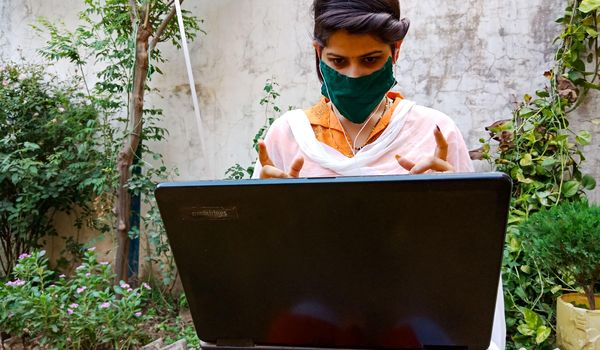Due to the COVID-19 crisis and the restrictive measures taken globally, violence against women and girls seems to have increased. Women's rights groups and victims support groups reported a rise of domestic violence and dramatic effects on sexual and reproductive rights of women and girls. The extremely stressful situation people felt during the lockdown periods, the widening gap between men and women related to care work, the restrictions on asking for help, and many other negative gender-related circumstances led to an increase of calls for help. Yet, another aspect of the crisis is still under-reported and official data is lacking: The effects of COVID-19 on cyber violence against girls and women are still under investigation.
According to the Forbes magazine, the lock-down and social distancing policies have increased the use of the Internet between 50 % to 70 %, being used for work, school, university, shopping etc. Usually, users with limited digital skills seem to be more at risk of cyber violence. Given the digital gender divide, women and girls are at a higher risk for these forms of violence. According to UN Women, particularly, female human rights activists, politicians, journalists, bloggers, members of ethnic minorities, indigenous women, LBTIQ+ persons, and women with disabilities are often experiencing online threads and harassment. The imposed lockdown created a “gender emergency” in several countries, by increasing the exposure of women to gender-based violence, including online violence. Google reported an 75 % increase in internet searches relating to support for different forms of violence. Reports by several EU countries state that the pandemic was used by perpetrators as a coercive control mechanism for the containment, fear, threat, and victimization of women at any form (physical or digital).
On the other hand, safe, affordable, and inclusive digital tools could increase the participation of girls and women and reduce the gender digital divide and cyber violence. The CYBERSAFE Project, which Women Against Violence Europe (WAVE) and partner organizations from eight EU countries are implementing, is one of such projects to tackle cyber violence.
- VIDC
- /
- Regions
- /
- Middle East
Cyber Violence against Women and Girls is increasing – particularly in times of COVID-19
By Barbara Brečko and Nicholas Spetsidis
VIDC online magazine Spotlight
This article was published in the VIDC online magazine Spotlight 53/September 2020. If you what to receive the quarterly online magazine, invitations and documentations please subscribe here.
Further readings and links
FRA (2014) Violence against women: an EU-wide survey, European Union Agency for Fundamental Rights.
Sargent, K.S., et.al. (2016) Cyber victimization, psychological intimate partner violence, and problematic mental health outcomes among first-year college students. In: Cyberpsychol., Behav. Soc. Netw., 19 (9) , pp. 545-550
Kee, Jac S.M. (2005) Cultivating violence through technology? Exploring the Connections between Information Communication Technologies (ICT) and Violence Against Women (VAW
About the authors
Nicholas Spetsidis is Project Coordinator and strategy advisor to the Board at the Union of Women Association of Heraklion, Greece.
Barbara Brečko is an Teaching Assistant at the Faculty of Social Sciences at the University of Liujblijiana, Slovenia. She has more than fifteen years of experience in research with children and schools, particularly related to digital competence and cyber violence.
Related contributions
- Defending the Istanbul Convention: A struggle for a future without violence
- “Global COVID-19 recovery plans need a gender audit.”
- Vulnerability Amplified: a glimpse into the effects of the COVID-19 pandemic on LGBTIQ people around the world
- The COVID-19 pandemic: sexual and reproductive health and rights under pressure

